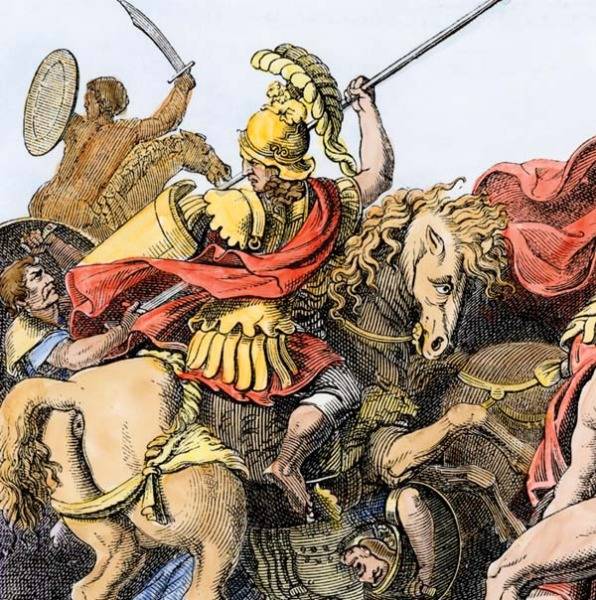The other day I went to quite a posh party ten tables of six at a very expensive London restaurant. Apart from rubberneckers like me, the guests tended to be distinguished: two former cabinet ministers, three national newspaper editors, and more TV presenters than you could shake a stick of Leichner at. Throughout the meal a conjurer in a turban worked the tables, doing oldfashioned tricks. He asked us to think of a card, then produced it from the deck. Cards torn apart were mysteriously reconstituted, knots appeared in ropes, then exploded in a flash of fire. The famous folk were entranced; cries of delight followed the magician round the room. Yet these were the kind of tricks you'd have seen performed by David Nixon on your Bakelite television back in the 1950s.
A year or so back we had Paul Daniels as a guest on The News Quiz, a Radio 4 programme I chair. Before we went on he demonstrated a new trick. He took a smallish rubber band, two or three inches in diameter, wound it elaborately round his fingers, then flipped it onto the floor. Astonishingly, it landed on its edge and raced along the carpet back towards him. It looked sensational. I'm certain he wasn't using a thread; he had simply worked out the exact way the elastic could be twisted so that it hit the ground spinning. It was the ultimate retail magic, since you couldn't possibly see it unless you were there. It wouldn't work on television and it didn't even work with our studio audience later, since ten feet away was too far.
But what can a magician do these days, when computers and television can bring you anything, from a distant star to a 70 million year old dinosaur? You want to saw the lady in half? Use Adobe Photoshop. Make the elephant disappear? Press a button on the Avid keyboard and it's gone.
You can go the Uri Geller route and claim that it's not conjuring at all, just good old fashioned paranormal power. This has the advantage that when things go wrong, and for Geller they go wrong quite often, you can claim that you've been inhibited by negative influences and hostile vibes. It also adds a frisson to some of the most routine and dreariest tricks in the magician's bag. (When you've seen, as I have, the sceptical magician James Randi put knots in an entire place setting of steel cutlery, you won't be so impressed by Geller's mental forces.)
Or you can go for the big, mad, crazed spectacular. In his wonderful novel Carter Beats The Devil, Glen David Gold has the eponymous hero, a real San Francisco magician of a century ago, make President Harding disappear. David Copperfield did the same to the Statue of Liberty (that was all lights and camera angles).
David Blaine, in what looks like a career devoted to acting out his selfhatred, spends days on top of pillars, or a month and a half in a box by Tower Bridge. Derren Brown neatly demonstrates the problem for modern magicians: his Russian roulette programme (shown, oh so tastefully, right after a documentary about the suicide of Dr David Kelly and an ad for the Samaritans) could work only if the audience actually believed that there was a chance, however remote, that he might blow his brains out. When it turned out that could never have happened, the whole thing became pointless, like watching a man stab himself with a rubber dagger.
Or you can do like the brilliant Penn & Teller. Some years ago I met Penn Jillette in New York, and he said that since television made every illusion possible, there was no point in performing one alone. The excitement came from seeing how it's done. So in one trick the pair are seen throwing items into the air. These don't come down again. It looks baffling, until at the end the TV camera swivels round and reveals they'd performed the whole thing upside down. The clue was in their carefully greased back hair.
Or take the famous stunt in which Teller is run over by a huge, heavily freighted lorry. It looks horrifying, till they show you: the weight is all on the right hand side of the truck, and the tyres on the left are soft balloons, decorated to look like real tyres, so that the pressure on Teller's ribcage is almost nonexistent.
Traditional magicians hate that kind of selfexposure, but they're wrong, and hopelessly out of date. Those old oriental boxes, top hats with pigeons and doublesided silk handkerchiefs won't do any more. We know how easy it is to fiddle.
The guy in the turban, David Blaine and Penn & Teller are all trying to solve the problem in different ways. So, I suppose, are the merchants of paranormal folderol, with their spoon bending, crop circles and alien abductions. But it all comes down to the same question: how do you persuade people to suspend disbelief when there's no reason for them to believe in the first place?

